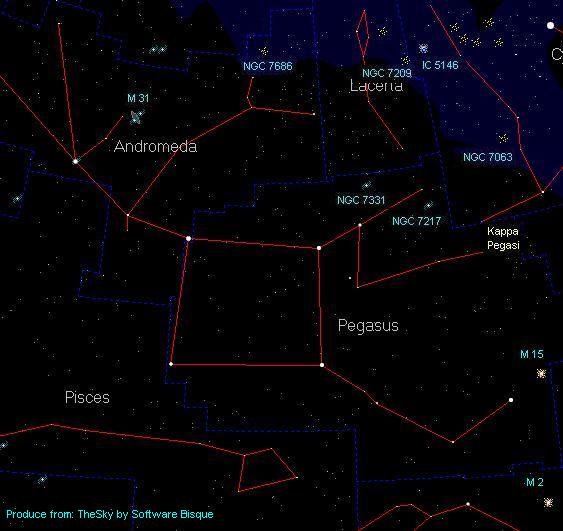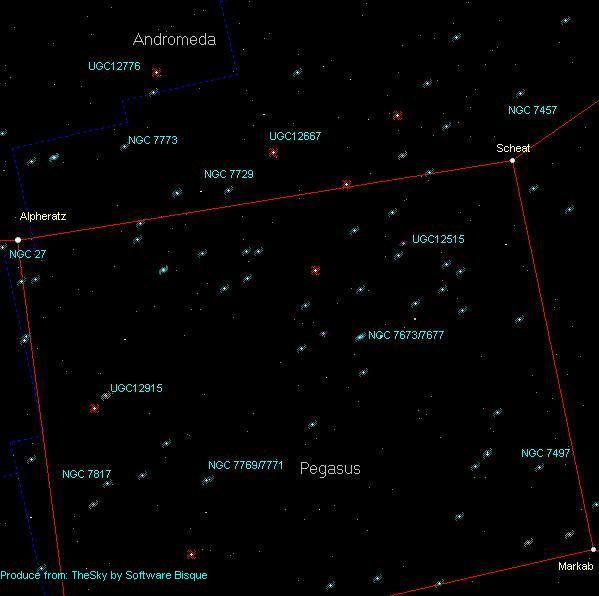The Legend Continues
Throughout time, the winged horse Pegasus has appeared in many different mythological stories and legends. One of the most famous tales is the “Royal Family of Constellations” where Perseus the hero rescues Andromeda the maiden from the sea monster Cetus. Upon slaying the monster, Perseus and Andromeda ride the winged horse into the sunset.
Other stories have Pegasus helping Bellerophon fight the Chimera and the Amazons which is also depicted as an insignia of the U.K.’s parachute troops of WWII. In Normandy, France - a key bridge was secured by the British 6th Airborne thus limiting the German’s counter-attack. In 1944 this bridge was renamed Pegasus Bridge in honour of the operation.
Today, the winged horse appears on the Mobile gas logo and Pegasus Airlines in Istanbul Turkey just to name a couple. Even the movie industry’s TriStar Pictures has incorporated our four-legged hero as its own. These are far too many other sources to mention in this article.

In astronomical terms, Ptolemy included Pegasus in his original 48 constellations in the year 2 BC and has survived changes made in the sky over countless centuries. In 1930, the International Astronomical Union set forth the permanent positions and boundaries of all 88 constellations in the sky. Pegasus will be recognized forever in time.
Looking at the Great Square at night, the alpha star called Markab – not to be confused with Markeb (Kappa Velorum) is slowly dying, as it appears the fusion process at its core are almost coming to an end. Markab can be found at the lower right of the square and signifies the shoulder of the famed horse. Residing 139 light-years from us, Markab is presently a B9 star but as time goes on, it will become a cooler orange coloured mammoth sun, thus moving off the main sequence and into the section reserved for giants.
Moving to the upper right of Square, we come to Scheat or 53-Beta Pegasi. Located 200 light-years from us, it is a class M red giant or supergiant star. If we replaced Scheat with the Sun; it would extend about halfway to Earth. This size works out to about 350 times as bright as our Sun but since most of the star’s output is in the infrared, the true value is more like 1500 times that of our daytime star.

Kappa Pegasi is a fine, but close double star consisting of magnitudes 4.8 and 5.3. They dance around each other in eleven and a half years with a small separation between the two. Today, their gap is 0.2 arc minutes along with a PA (position angle) of 132 degrees. This binary system is 115 light-years from us.
The Great Square of Pegasus lists 7th in area and takes up 1,121 square degrees of sky. Within these boundaries lay 298 NGC objects down to magnitude 16.2. At the top of our observing list is the spiral galaxy NGC 7331. Aka the Deer Lick Galaxy, its located 46 million light-years from us. Even at this distance it still glows at a decent magnitude 9.5 - yet somehow missed a place in Charles Messier’s famous catalogue of objects. NGC 7331 measures 11 by 4 arc minutes or just over a third the size of the full moon of length in the sky. A supernova recorded in 1959 is the only one associated with this galaxy.
The Deer Lick is also a guide to locating the illusive Stephan’s Quintet. Sometimes regarded as Hick 92, the Quintet is a collection of very faint remote galaxies that are estimated to reside somewhere between 210 and 340 million light-years from us. Astronomers believe that four of the five galaxies are gravitationally bound and will eventually merge together.
You might find NGC 7729 will pose a bit of a challenge. That does, however, depend on the aperture of your telescope as well as seeing conditions. Those owning a 20 inch and larger telescope should not have a problem finding anything in the sky. NGC 7729 is about 14th magnitude and measure 1.8 X 0.6 arc minutes and is elongated with a bright central bulge.
| Object | Type | Magnitude | R.A. | Dec. |
|---|---|---|---|---|
| M15 | Globular cluster | 6.4 | 21h 30m 0.0s | +12d 10 |
| NGC 7331 | Galaxy | 9.5 | 22h 37m 6.0s | +34d 24 |
| NGC 7497 | Galaxy | 13.0 | 23h 09m 6.0s | +18d 11 |
| NGC 7729 | Galaxy | 14.0 | 23h 40m 36.0s | +29d 11 |
| Stephan’s Quintet | Galaxy group | 13.5 | 22h 35m 53.9s | +33d 57 |
Look for the globular cluster M15. It is located on the right side of the constellation boundaries. This extremely dense cluster is located a little more than 33,000 light-years from us. It just reaches naked-eye visibility of magnitude 6.4 on a very dark moonless night. There have been 112 variable stars identified in this incredible cluster.
If you are up to a real challenge, try spotting or photographing Pease 1 in M15. This is a rare planetary nebula residing in a globular cluster. Pease 1 is listed as magnitude 15.5 and is a mere 3 arcseconds wide. Good luck with this one.
Before leaving the confines of Pegasus, be sure to look for NGC 7497. This very elongated galaxy measures one-fifth the wide of the full moon. At almost edge-on status, NGC 7497 is listed at 13th magnitude and shows some nice detail in its spiral arms.
Jupiter is still the show stopper for November and by month’s end, will be on the meridian at sunset, setting six hours later. On November 1st, Jupiter was 715 million kilometres away and moving from us at 1,700 kilometres a minute. But although Jupiter is slowly leaving our skies, Mars is becoming more prominent as the weeks go by. The red planet on November 1st was 175 million kilometres and closing fast. The Mars opposition will take place on January 29, 2010, at which time our two planets will be closest.
Brilliant Venus is still up in the eastern predawn sky but sliding lower each day. By month’s end it will be a mere 10 degrees from the Sun, making it difficult and a bit hazardous to find. Being this close to the Sun in the sky, one can accidentally catch a glimpse of an unfiltered Sun in binoculars or a telescope.
The Leonid meteor shower will peak on November 17th at 15 hours UT. This year, the International Meteor Organization is expecting rates to be close to 100 meteors seen per hour at its peak. This shower is the result of 55P/Tempel-Tuttle’s return in 1998 when the comet replenished new debris in its wake. With a 33 year orbit, the comet’s next return is around the year 2031. It is this comet dust that Earth plows through each year on this same (or close to) date. These sand size meteoroids will dive into Earth’s atmosphere at about 72 km/sec, vaporizing 80 to 100 kilometres above us.
The best place to enjoy the show is away from city lights. Simply pack a lawn chair that reclines, a sleeping bag along with winter gear for warmth and head into the countryside. You will have to wait for the radiant (the area where the meteors seem to come from) to rise around midnight local time. The higher the radiant is in the sky, the greater the numbers of meteors seen. The new moon occurs on the night before so it will not interfere with the sky show.
Till next month, clear skies everyone.
